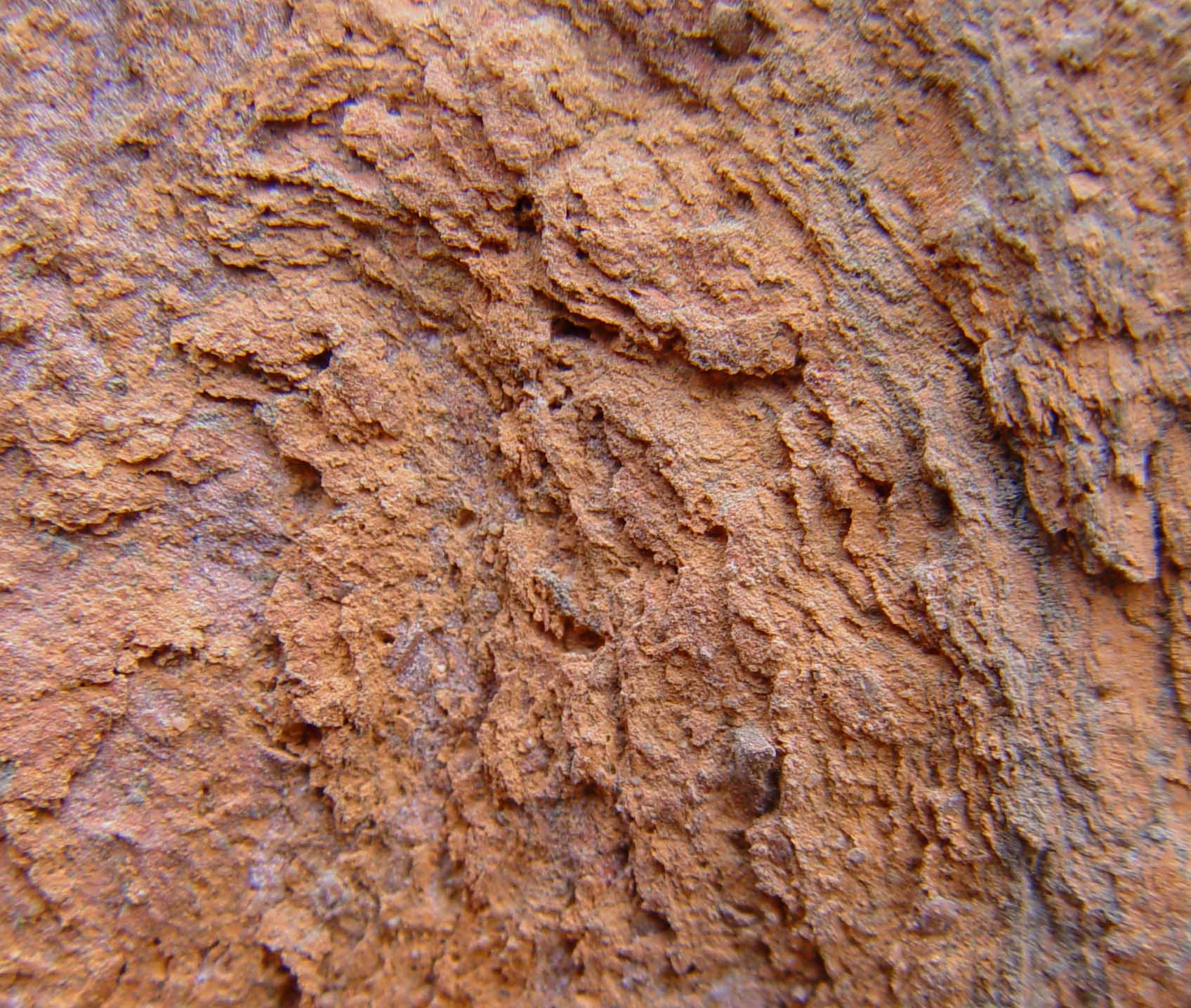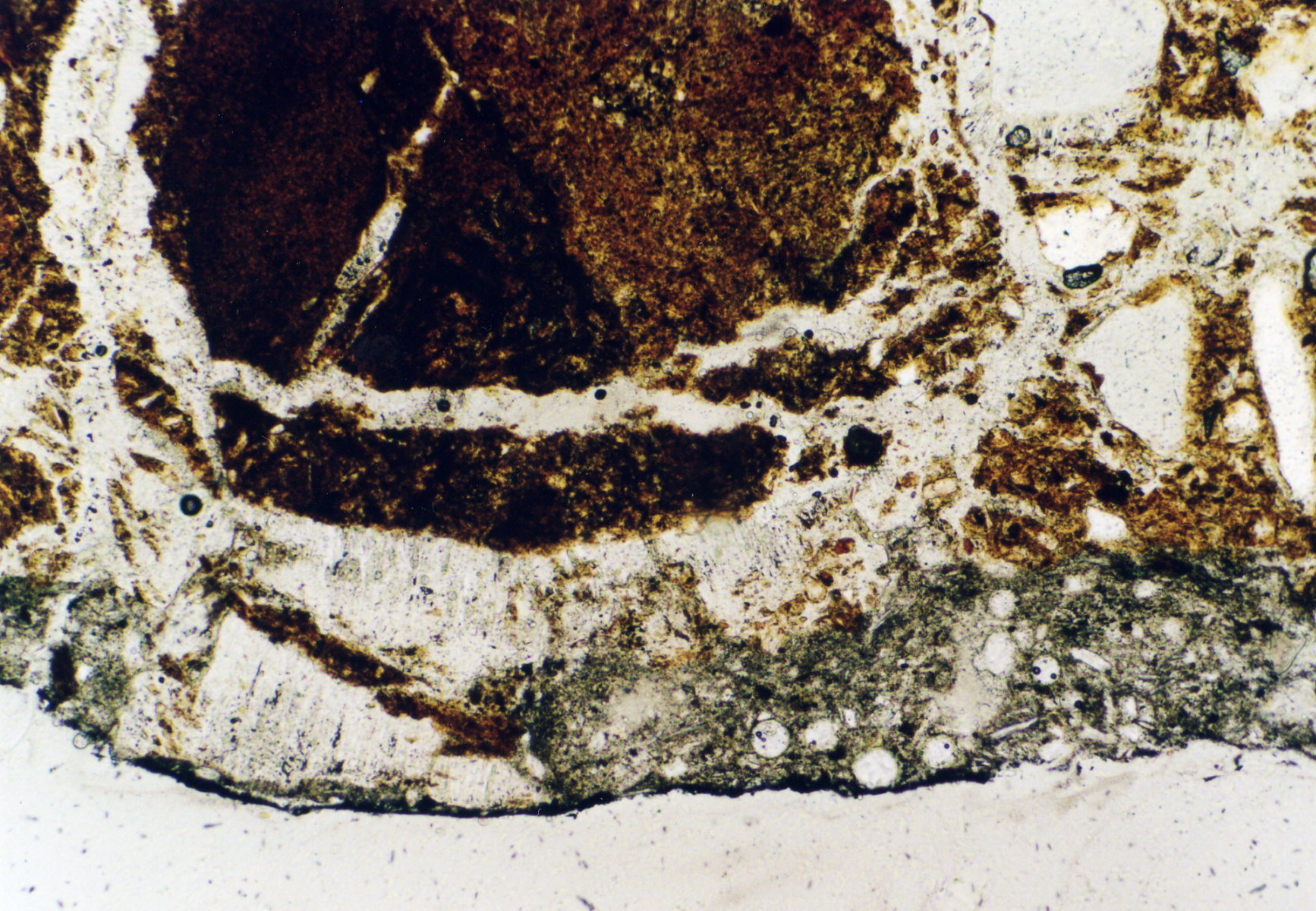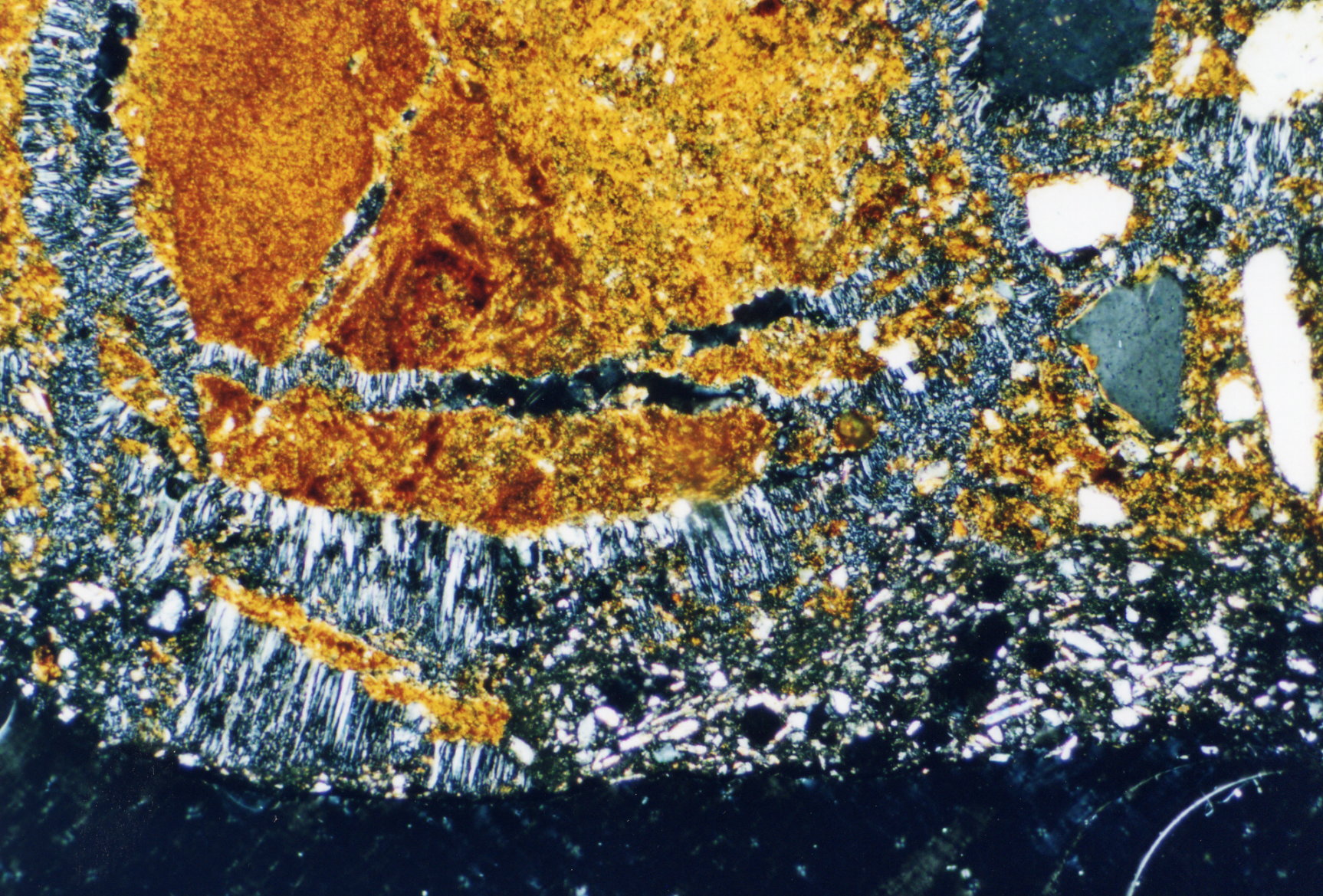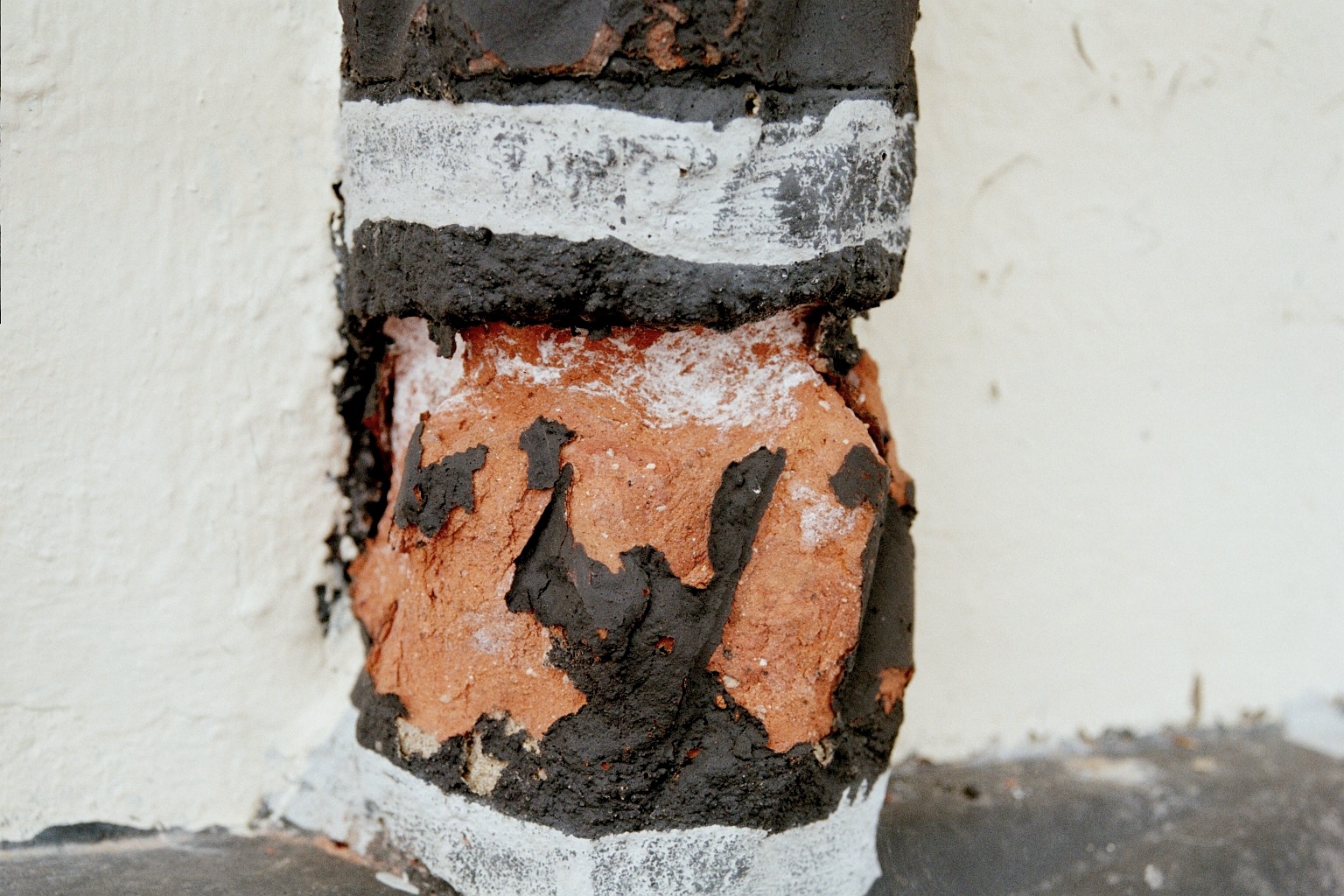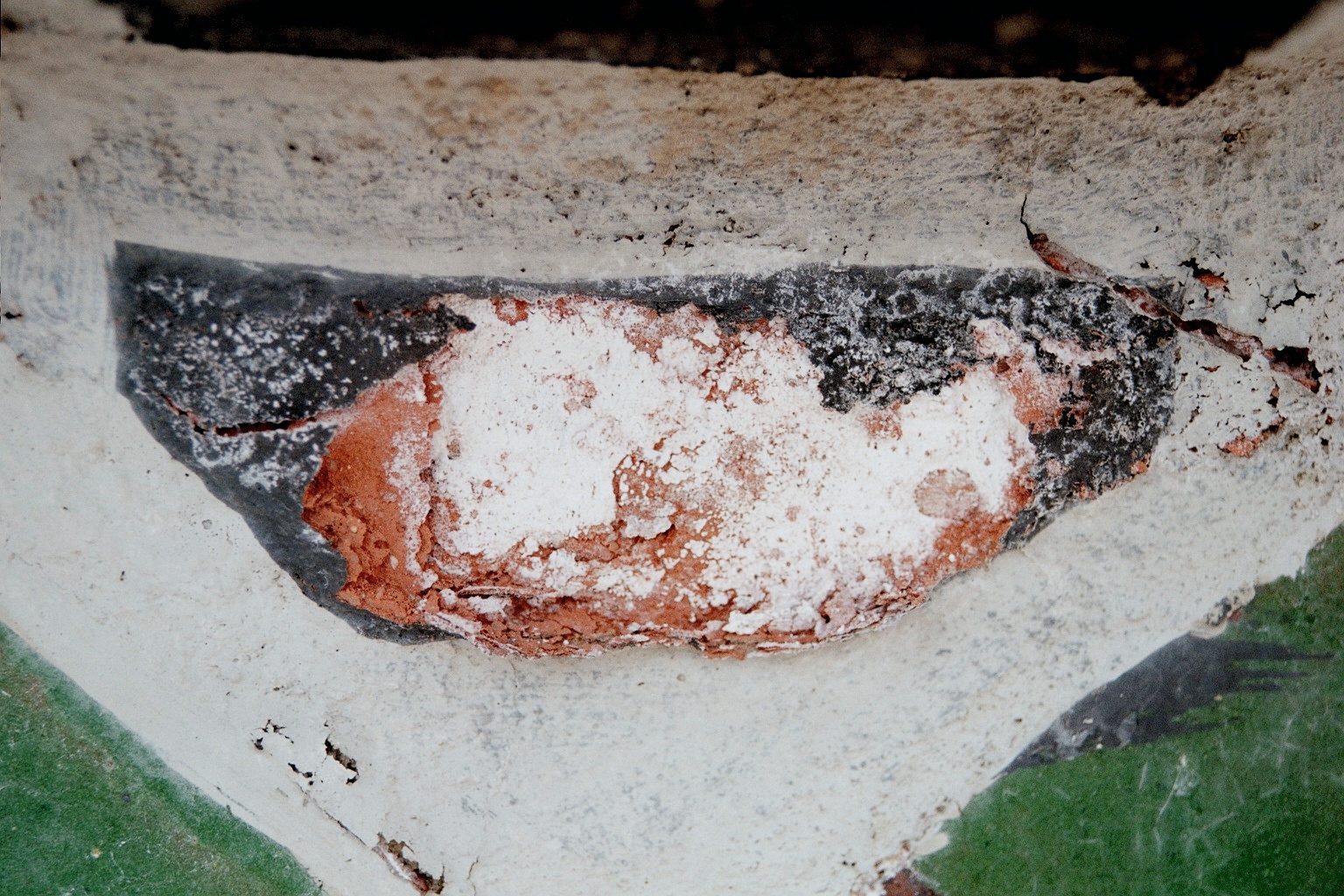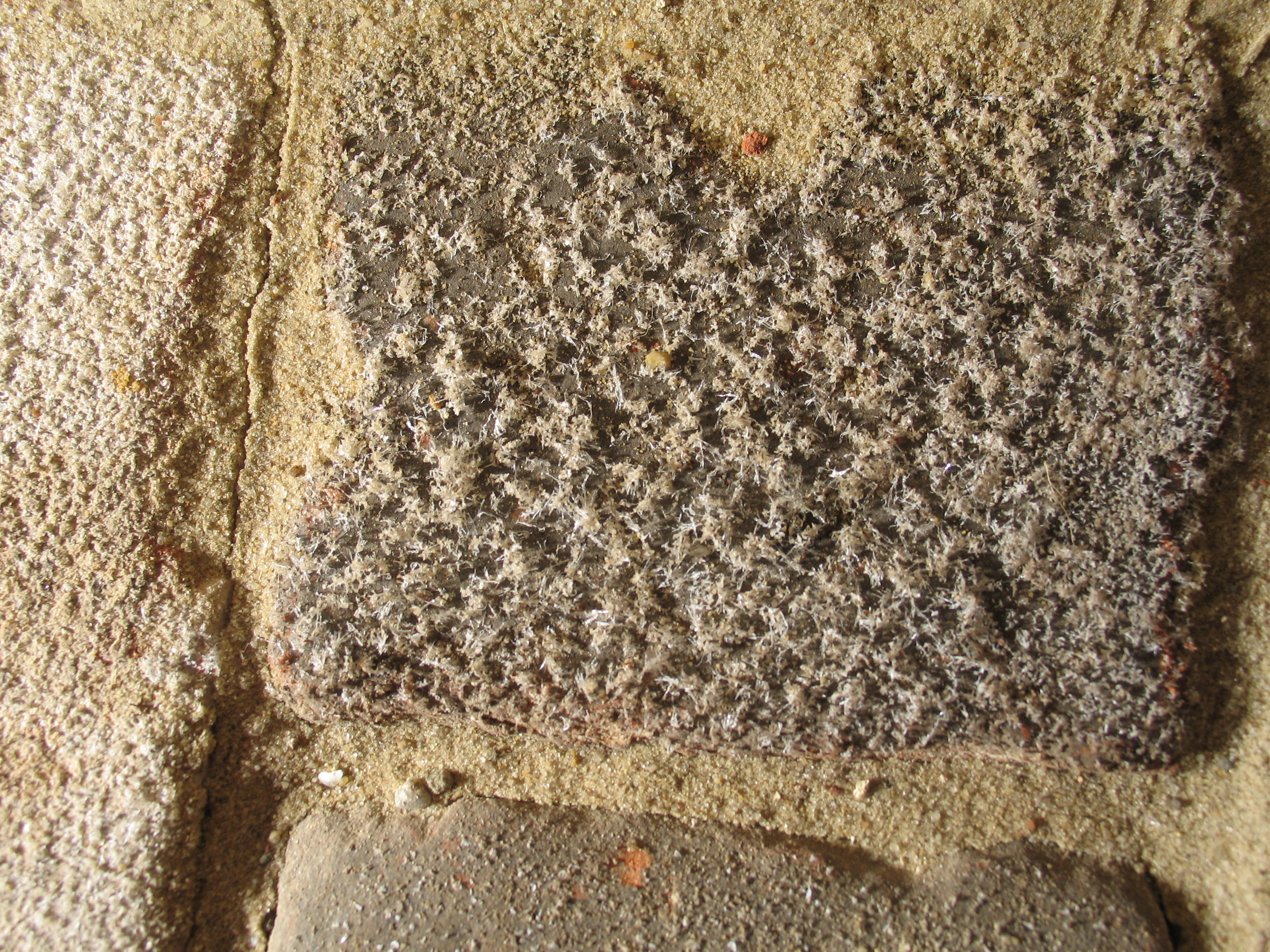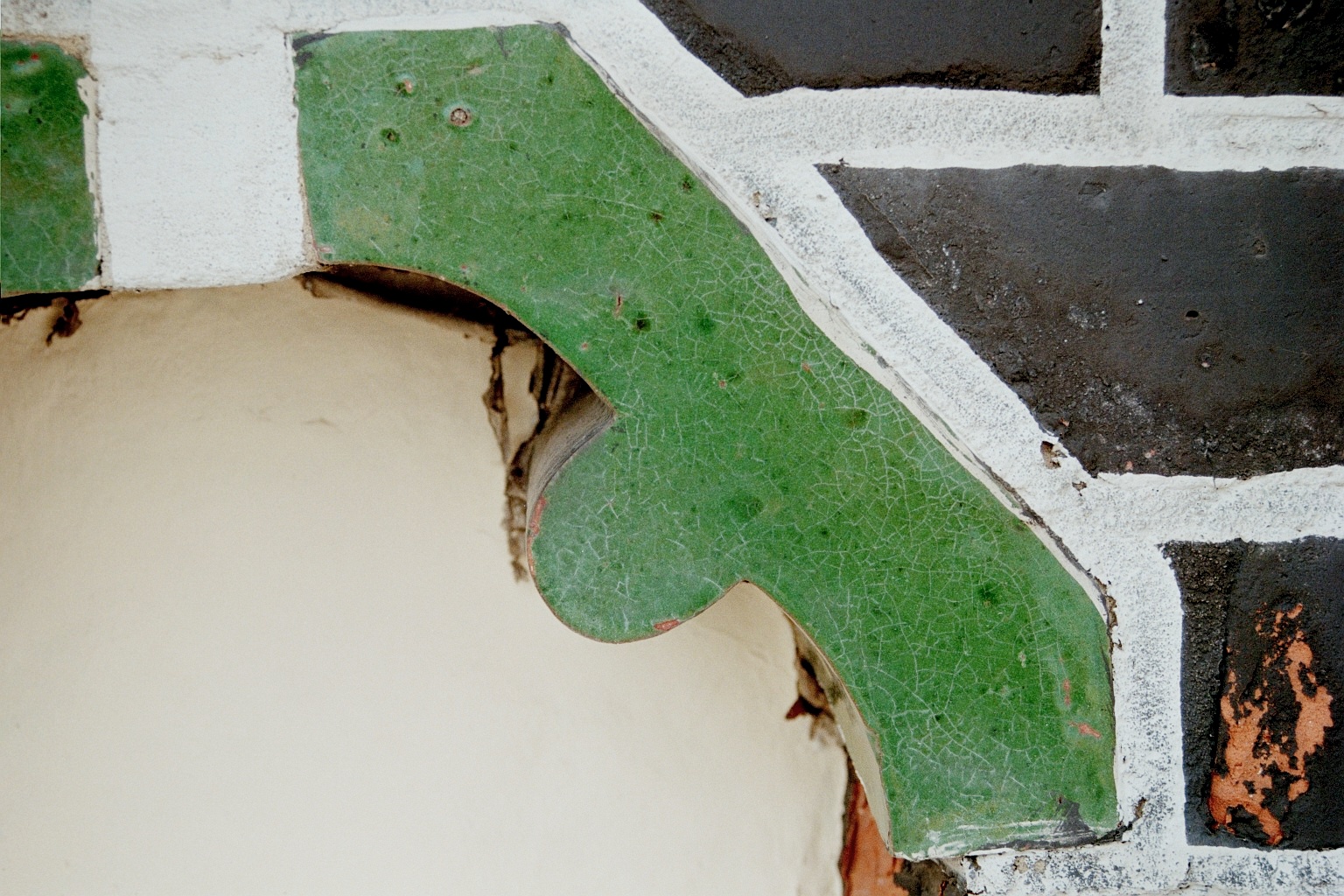Architectural Ceramics
<bibimport/>
Author: Hans-Jürgen Schwarz
Back to Decay Pattern
Abstract[edit]
Typical damage patterns are presented and explained.
Decay pattern of architectural ceramics[edit]
Deterioration of brickwork
Salt-induced damage to bricks is common.
Damage to bricks can appear as follows:
Glazed architectural ceramics
The glaze on building ceramics prevents the transport of moisture and salts. Often however, the glaze is split into a fine network of cracks (craquele), allowing the moisture transport through capillary action. In the fissures of the craquele, salt contamination can be seen particularly well and often this damage leads to the spalling of the glazes.
Some examples of salt-contaminated glazed building ceramics are shown here.
Flaking[edit]
- Decay pattern on a brick of the St. Jakobi Church in Perleberg
Figure 3: Photo micrograph as Fig 2 with crossed polarizers. It is clearly visible that, on the one hand gypsum is causing the damage to the brick, but on the other hand it acts like an adhesive/ cement, holding the flaking pieces in place. With the removal of the gypsum the original substance of the brick would be lost.
Weathering[edit]
- Damage to a building in Lüneburg
Efflorescences[edit]
- Efflorescences on architectural ceramics
